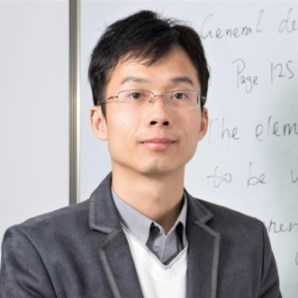Optical Properties of Transparent Ceramics
A special issue of Materials (ISSN 1996-1944). This special issue belongs to the section "Advanced and Functional Ceramics and Glasses".
Deadline for manuscript submissions: closed (10 June 2023) | Viewed by 1799
Special Issue Editor
Special Issue Information
Dear Colleagues,
As a newly emerged material, transparent ceramics have found many applications in areas such as envelopes in high power lamps, scintillators, electro-optic devices, and optical components, such as windows and lens. Furthermore, they have been used as gain mediums in solid-state lasers replacing single crystals with lower cost and higher efficiency. The detailed investigations of the physics properties of structured ceramic materials, especially their optical properties, play an important role in realizing and optimizing their existing and potential applications. Techniques such as Raman scattering, steady-state and time-resolved photoluminescence (PL) spectroscopy, absorption/excitation spectroscopy, etc., are noninvasive and helpful means to investigate lattice vibrations, energy levels, nonlinear optical processes, carrier recombination processes and dynamics, and related physics procedures inside transparent ceramics, especially for rare-earth (RE) doped ones.
The aim of this Special Issue is to highlight the latest developments in the optical characterization of transparent ceramics, especially to advance the fundamental understanding of the relationship between doping type and concentration, growth conditions, and optical properties. Topics of interest also include the latest research on the advanced characterization of material properties and their applications in the optical area.
Dr. Changcheng Zheng
Guest Editor
Manuscript Submission Information
Manuscripts should be submitted online at www.mdpi.com by registering and logging in to this website. Once you are registered, click here to go to the submission form. Manuscripts can be submitted until the deadline. All submissions that pass pre-check are peer-reviewed. Accepted papers will be published continuously in the journal (as soon as accepted) and will be listed together on the special issue website. Research articles, review articles as well as short communications are invited. For planned papers, a title and short abstract (about 100 words) can be sent to the Editorial Office for announcement on this website.
Submitted manuscripts should not have been published previously, nor be under consideration for publication elsewhere (except conference proceedings papers). All manuscripts are thoroughly refereed through a single-blind peer-review process. A guide for authors and other relevant information for submission of manuscripts is available on the Instructions for Authors page. Materials is an international peer-reviewed open access semimonthly journal published by MDPI.
Please visit the Instructions for Authors page before submitting a manuscript. The Article Processing Charge (APC) for publication in this open access journal is 2600 CHF (Swiss Francs). Submitted papers should be well formatted and use good English. Authors may use MDPI's English editing service prior to publication or during author revisions.
Keywords
- transparent ceramics
- optical properties
- nonlinear optical process
- optical applications






